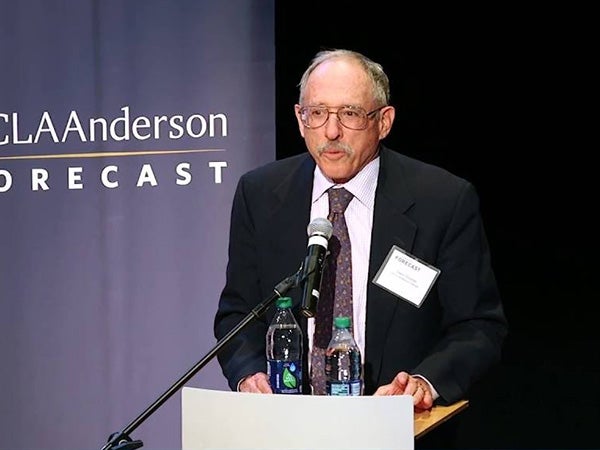Boost from Tax Cuts, Spending Programs Running Out
Boost from Tax Cuts, Spending Programs Running Out

Shulman is credited with coining the terms “Goldilocks economy” and “new paradigm economy.” In 1990, he won the first annual Graaskamp Award for Excellence in Real Estate Research from the Pension Real Estate Association. He served in senior roles with Lehman Brothers and Salomon Brothers and, early in his career, he was an associate professor of management and economics at UC Riverside.
The title of the report is “A Wile E. Coyote Economy?” and it comes from a quote from Ben Bernanke in July, when he said that when some of the effects of the tax cuts and the new spending programs of the administration have run out, the economy could have some real issues in 2020.
That’s where we are. Our forecast is, in very simple terms, on a 4th quarter to 4th quarter basis, which means from the 4th quarter of 2017 to the 4th quarter of 2018, and the 4th quarter of 2018 to the 4th quarter of 2019, and so on. The forecast calls for 3 percent GDP this year, 2 percent next year and 1 percent in 2020, with reasonable recession risk in 2020. When you get down to 1 percent you start to worry about recession. The other thing is, we have the Fed on a continuing path to normalizing interest rates, and probably a little bit more, so we could see the Federal Funds Rate over 3 percent in 2020.
There’s no clock. It is not inevitable. We’re in a very unprecedented time because we’ve had unprecedented monetary policy for a decade, and now we have this unprecedented fiscal policy in peace time, a big tax cut and a big spending program increase on top of a fully employed economy. So this time really is different. We can’t look back in history to say, “Well, this is what happened then and this probably could happen now.” The other thing is, we think there’s going to be more inflation than what the market now expects and the market is expecting inflation of below 2 percent. We predict it in the high 2 percent. It doesn’t sound like a big deal, but that could mean another half a point to a full point higher on interest rates.
The biggest risk is that (the economy) could get much worse if the trade war escalates. It’s already escalated with China, it could escalate with Canada now that NAFTA is a done deal with Mexico. (Editor’s note: Subsequent to this interview but prior to publication, the United States, Mexico and Canada reached agreement on a trade deal.) On the plus side, this (might) just be a big negotiating strategy on the part of the Trump administration, and things could work out in 2019 on trade, where we come to a modus vivendi with China, NAFTA and Europe. I don’t think that’s likely, but that certainly would be very positive for the upside.
The biggest economic thing he’s done is the tax cut with this big spending increase. He did that with the Democrats. Part was defense, which he wanted to do, and then he had this big increase in domestic spending in order to get his defense plan. So it’s both. And the other big thing is the whole trade policy. Oh, and the other thing is the deregulatory policy of the administration, and the deregulatory policy thus far has probably had a major impact, especially on small business.
Instead of worrying about what new regulation Washington was going to bring down upon small business, all of a sudden that fear is gone and I think that’s led to an increase in investment and optimism. You see small business optimism off the charts in all the surveys.
We have unemployment rising at the end of the forecast period and we have it bottoming at 3.5 percent; but we have it going over 4 percent by the end of 2020. That’s still close enough to full employment. Unemployment normally goes up two to three points in a normal garden-variety recession so, yes, that’s what you’ll normally see — a rising unemployment rate of two or three percentage points. That’s what normally happens in a recession. That’s not (just) 2008, that’s a normal postwar recession.
I think the easiest thing is to look at the monthly employment report and the monthly inflation CPI reports. If we’re on track, unemployment initially will be falling, the amount of job gains will be less than what we’ve been used to because we’re at full employment, and inflation will be modestly up-ticking. This is monthly high-frequency data. If you want to look at weekly data — if you want to be geeky about it — you could look at new unemployment claims and (see) they’ve been running at record lows.